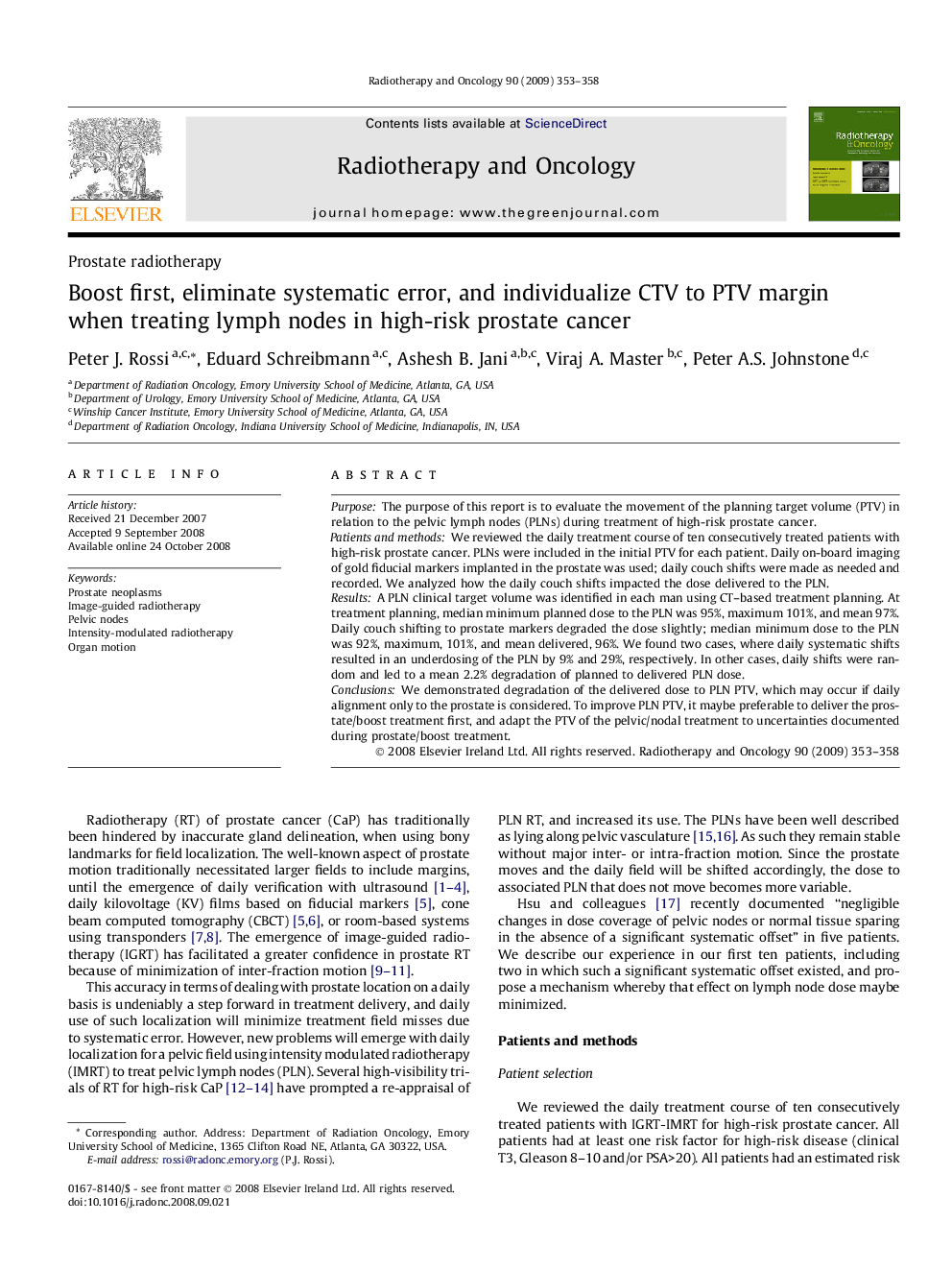| Article ID | Journal | Published Year | Pages | File Type |
|---|---|---|---|---|
| 2160096 | Radiotherapy and Oncology | 2009 | 6 Pages |
PurposeThe purpose of this report is to evaluate the movement of the planning target volume (PTV) in relation to the pelvic lymph nodes (PLNs) during treatment of high-risk prostate cancer.Patients and methodsWe reviewed the daily treatment course of ten consecutively treated patients with high-risk prostate cancer. PLNs were included in the initial PTV for each patient. Daily on-board imaging of gold fiducial markers implanted in the prostate was used; daily couch shifts were made as needed and recorded. We analyzed how the daily couch shifts impacted the dose delivered to the PLN.ResultsA PLN clinical target volume was identified in each man using CT–based treatment planning. At treatment planning, median minimum planned dose to the PLN was 95%, maximum 101%, and mean 97%. Daily couch shifting to prostate markers degraded the dose slightly; median minimum dose to the PLN was 92%, maximum, 101%, and mean delivered, 96%. We found two cases, where daily systematic shifts resulted in an underdosing of the PLN by 9% and 29%, respectively. In other cases, daily shifts were random and led to a mean 2.2% degradation of planned to delivered PLN dose.ConclusionsWe demonstrated degradation of the delivered dose to PLN PTV, which may occur if daily alignment only to the prostate is considered. To improve PLN PTV, it maybe preferable to deliver the prostate/boost treatment first, and adapt the PTV of the pelvic/nodal treatment to uncertainties documented during prostate/boost treatment.
